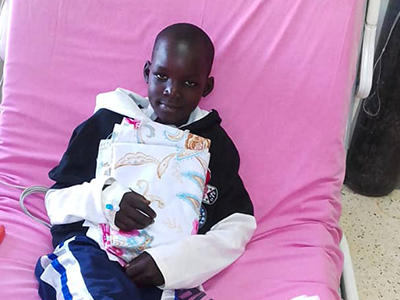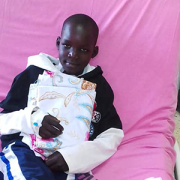Local context, health system integrations key to sustainable interventions after RHD diagnosis

Although entirely preventable, RHD, a disease of poverty and social disadvantage resulting in high morbidity and mortality, remains an ever-present burden in low- and middle-income countries, as well as rural, remote, marginalized and disenfranchised populations within high-income countries.
A rheumatic heart disease (RHD) work group convened by the National Heart, Lung, and Blood Institute (NHLBI) concludes that any priority intervention strategies to slow or stop late complications of RHD need to consider local contexts and should be integrated into health systems to meet the affected community’s needs in a sustainable way.
The group outlined priorities based on current available evidence to support the development and implementation of accessible, affordable and sustainable interventions in low-resource settings to manage RHD and its related complications.
Craig Sable, M.D., associate chief of Cardiology at Children’s National Hospital, served as a senior author on the recommendations, based on the work group findings.
Why it matters
Although entirely preventable, RHD, a disease of poverty and social disadvantage resulting in high morbidity and mortality, remains an ever-present burden in low- and middle-income countries, as well as rural, remote, marginalized and disenfranchised populations within high-income countries.
The NHLBI workshop sought to support RHD eradication efforts worldwide by:
- Analyzing the current state of science
- Identifying basic science and clinical research priorities
Each work group was assigned to review existing guidelines and research for different stages of the disease’s progression, which is now being published together as a set of five companion articles to raise the prioritization of RHD research and funding.
Moving the field forward
Due to the high prevalence of RHD in low- and middle-income countries, Dr. Sable’s work group focused on gaining a better understanding of the needs in the field from the five perspectives: people living with RHD, the community, healthcare providers, health systems and policymakers.
They identified several priorities and strategies, and they stressed that any interventional strategy, now or in the future, must be culturally safe and community-driven to ensure the creation of a locally and culturally relevant, sustainable continuum of care for people from historically marginalized populations.
What’s next
The authors emphasize that that over 300,000 deaths per year are the result of inadequate, underfunded and poorly integrated care. “Global vision and leadership to enact and implement available policies are needed to close large research gaps in all aspects at patient, health system and policy levels. Robust research and development are urgently needed to improve comprehensive tertiary care and ensure implementation of evidence-based interventions, while developing new innovations, technologies and interventions.”
You can read all the working group manuscripts, including this one: Tertiary Prevention and Treatment of Rheumatic Heart Disease: A National Heart, Lung, and Blood Institute Working Group Summary, in BMJ Global Health.
Learn more about the challenges of rheumatic heart disease in sub-Saharan Africa and other developing parts of the world through the Rheumatic Heart Disease microdocumentary series:











